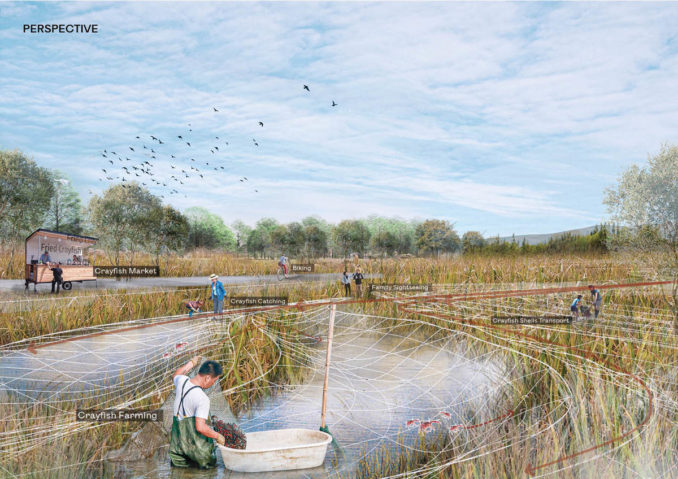
Abandoned airports have received new social attention in recent years. While exploring the local regional characteristics, the design concept attempts to re-activate the site by introducing ecologically sustainable industries.
Background of the site and new opportunities
Located in Nanjing, Jiangsu Province, China, Nanjing DaJiaoChang was the former site of the Beijing Army’s Grand Teaching Ground during the Ming Dynasty, and in 1929, the Republican government built an airport there, which became the Chinese Air Force base at the time. In 2015, DaJiaoChang Airport was officially closed. However, after years of use, the site on both sides of the runway has left obvious land pollution problems.
Crayfish is one of the most famous specialties in Nanjing, and as the demand for crayfish has increased, so has the need for more land requirements. In particular, the crayfish shells have a good heavy metal adsorption capacity, while reasonable treatment of crayfish shells can be obtained Chitin, Chitosan and N-acetyl d-glucosamine.
Crayfish farming can bring new vitality to this land.
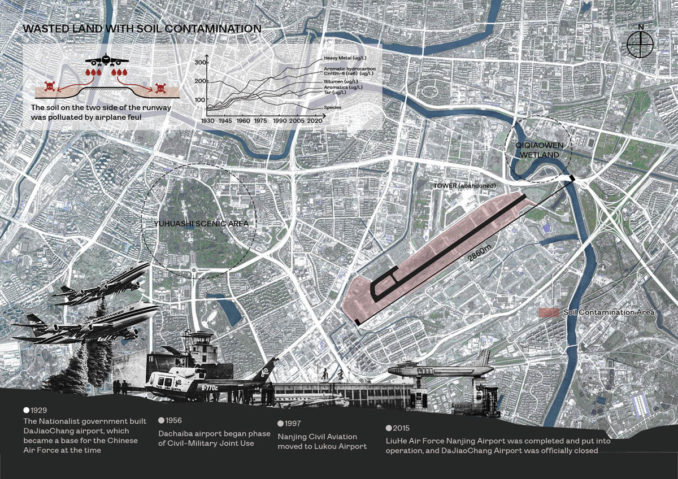
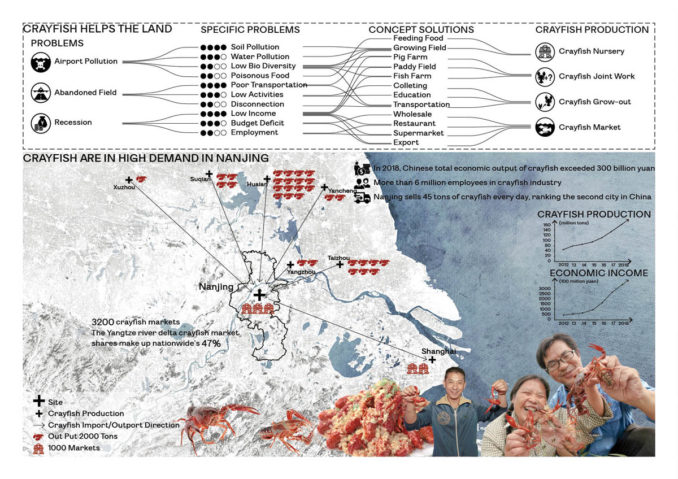
Design strategy
Taking advantage of the topography, the original abandoned land of the airport is designed as a new crayfish industrial park. The topography of the site is constructed through the characteristics of the different growth stages of crayfish, forming eight main farming zones. A crayfish shell processing plant was set up in the park near the crayfish harvest.
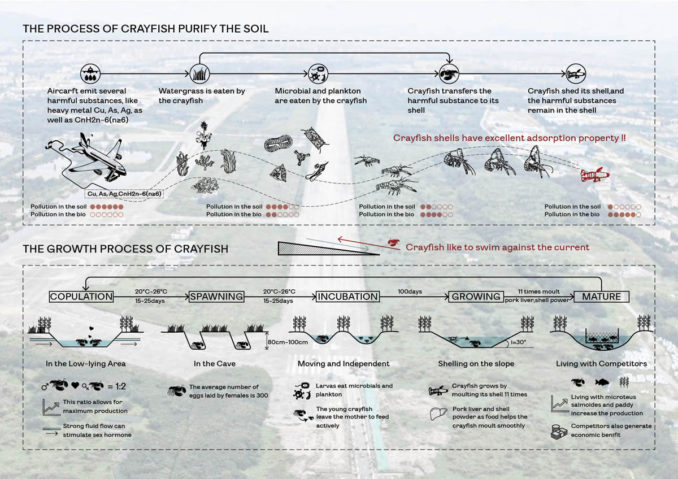
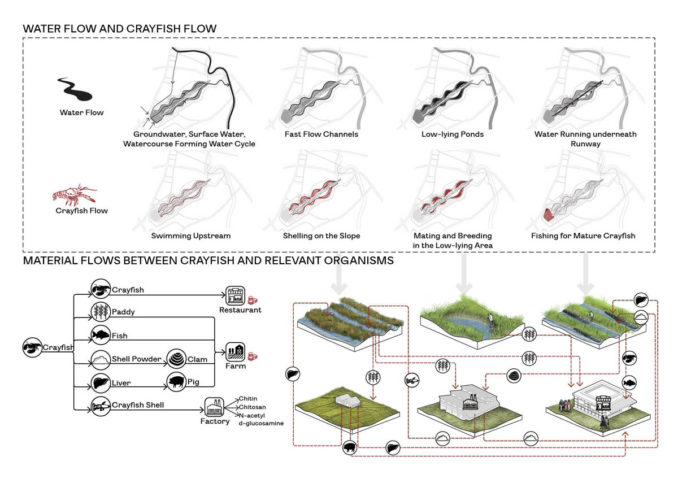
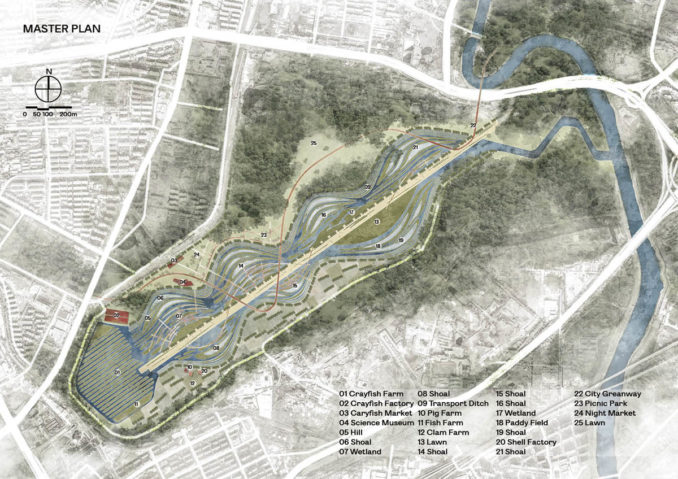
Ecological sustainability and economic benefits
Crayfish farming, crayfish shell processing plants and their surrounding industries are interconnected at the site, while crayfish-related materials, including rice, fish, shell powder and pigs, circulate there. The site is reactivated while bringing new vitality and opportunities to the town.
Crayfish handling possibilities and safety
Various scientific and educational and amusement activities can be opened around the theme of crayfish. Mature crayfish are recommended to be processed mainly in factories in a short period of time. When the crayfish reach an edible standard, they enter the restaurant for consumption.
Runway for Crayfish
Image Credits: Mengran Zhang
Student Credits: Mengran Zhang, Politecnico di Milano
